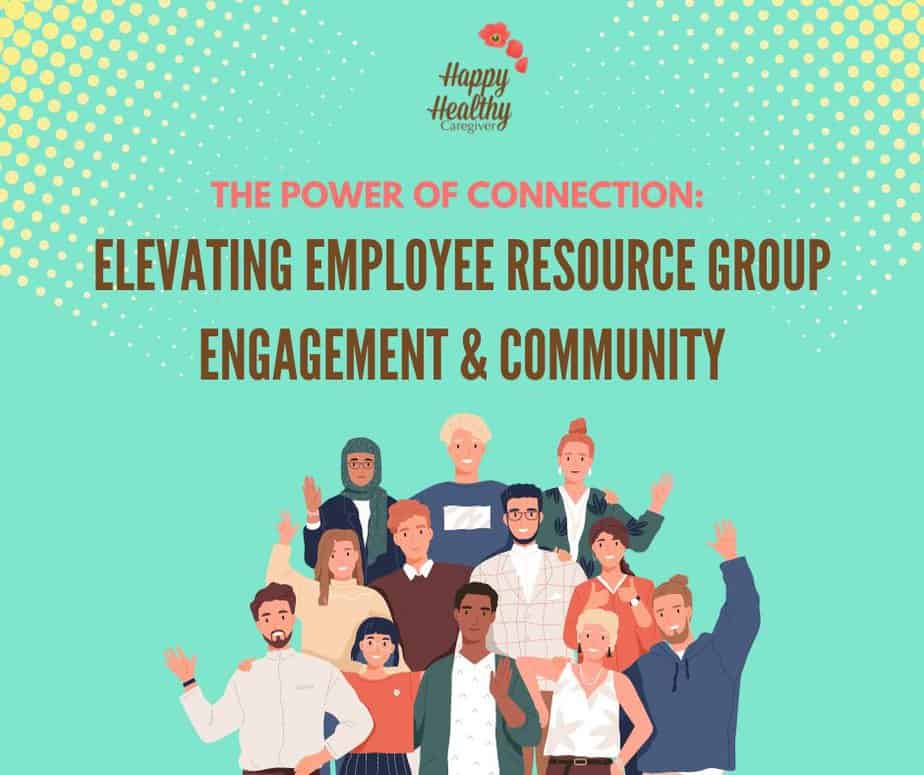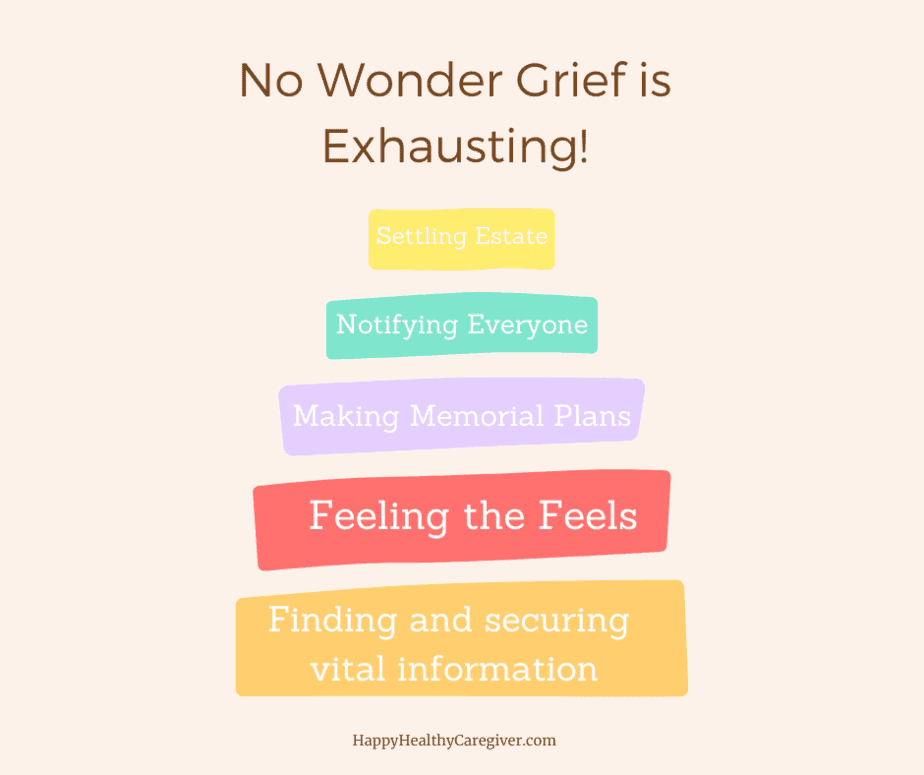Caregiving doesn’t just happen during the work hours. In fact, as a sandwich-generation working family caregiver, I often had to use my time off for care, leave work unexpectedly, and make calls during the workday. Sometimes, my head wasn’t completely wrapped around work due to all the caregiving worries and responsibilities. And yet, I was also a valued and respected employee. I needed to work to support my family and found work to be a massive part of my identity.
I wanted to be a top performer, grow my career, and not feel guilty about caring for my family members. Is it possible to have all of these things be true at once? I do believe so…with the proper employer support in place.
Working Family Caregiver Statistics
Was I alone if feeling overwhelmed by everything on my plate as a working family caregiver? At the time, I felt alone, but later, when I saw the statistics available about caregiving and the workplace, I was not. Many people are likely silently juggling careers and caregiving and trying to figure it out. The following statistics are the latest available from published reports from AARP, the National Alliance for Caregiving, and the Family Caregiver Alliance.
- Number of Caregivers: Approximately 53 million caregivers in the U.S. provide unpaid care to adults and children with special needs.
- Working Caregivers: About 60% of family caregivers are employed while providing caregiving assistance.
- Hours of Care: On average, working caregivers spend around 24.4 hours per week providing care to their loved ones.
- Impact on Work: 70% of working caregivers report adjusting their work schedule to accommodate caregiving duties.
- Productivity: Working caregivers can experience reduced productivity due to caregiving responsibilities, costing U.S. businesses an estimated $38 billion annually.
- Healthcare Costs: Working caregivers are more likely to experience health problems due to the stress and demands of caregiving, leading to higher healthcare costs.
- Emotional Toll: 57% of working caregivers report feeling emotionally drained, and 42% say caregiving has caused stress in their personal lives.
- Employer Support: Only 56% of working caregivers say their employers offer resources to help them balance work and caregiving responsibilities.
- Workplace Impact: 69% of caregivers report rearranging their work schedule, decreasing their hours, or taking unpaid leave to meet caregiving needs.
- Career Impact: 29% of working caregivers report taking a leave of absence, 16% report switching from full-time to part-time work, and 13% have quit their jobs due to caregiving responsibilities.
- Caregiver Ages: Caregivers often fall within the age range of 35 to 64, impacting the prime working years.
One Solution: An Employee Resource Group for Working Caregivers
The statistics above about the impacts on working caregivers and their employers are staggering and likely only increasing as individuals live longer with the help of technology and healthcare advancements. However, we have more control over some of these statistics, such as the one related to Employer Support. One low to medium-cost employee support benefit for working caregivers could be the start of what’s commonly referred to as an Employee Resource Group, or ERG.
An Employee Resource Group (ERG) is a voluntary, employee-led organization within a company that brings together individuals who share common characteristics, backgrounds, interests, or experiences. The primary purpose of an ERG is to provide support, networking opportunities, and a sense of community for its members while promoting diversity, inclusion, and equity within the workplace. ERGs often engage in various activities and initiatives that contribute to their members’ personal and professional development and help advance the company’s diversity and inclusion goals.
You may think you already have an Employee Assistance Program; isn’t that enough? EAP services can benefit family caregivers, but in my opinion, they don’t replace the elevated power of an ERG. My former company offered many EAP services, but I was unaware of how they could help me in my caregiving role. I didn’t make the connection. Other working peers using and talking about how they are using the EAP and other company benefits is where the magic happens.
Affinity, Network, and Cultural Groups
ERGs have gained popularity over the years as a way for companies to promote diversity, inclusion, and employee engagement. Many large and well-established companies have implemented ERGs, and it’s becoming more common, especially in industries that prioritize diversity and employee well-being.
While I find most companies are calling these groups Employee Resource Groups, other names for these groups could be:
- Affinity Groups: These groups bring together employees with common characteristics, interests, or experiences, such as gender, ethnicity, or hobbies.
- Business Resource Groups: Like ERGs, these groups focus on creating employee networking and development opportunities while addressing business-related objectives.
- Diversity Networks: These groups emphasize diversity and inclusion efforts, aiming to support and promote underrepresented or diverse employee populations.
- Network Groups: A broad term that describes groups offering networking, professional development, and community-building opportunities for employees.
- Cultural Groups: These groups celebrate and promote awareness of various cultures within the workplace, fostering cultural understanding and appreciation.
- Inclusion Councils: These councils create an inclusive environment for all employees, promoting a sense of belonging and equity.
- Professional Groups: Groups focused on specific professions or fields within the company, providing resources and opportunities for career growth and development.
- Resource Networks: Like ERGs, these networks offer resources, support, and connections to employees with shared characteristics or interests.
- Identity Groups: These groups emphasize their members’ shared identity or characteristics, fostering community and support.
- Alliance Groups: Groups that form alliances or partnerships within the company to work together on common goals or initiatives.
- Employee Networks: Broad term encompassing various groups employees can join to connect, learn, and collaborate.

Companies Who are Embracing ERGs
Often, companies have multiple ERGs supporting different groups such as Veterans, Women, LGBTQ+, Latinos, persons with disabilities, etc. I used to co-lead a Women’s ERG in my corporate job. We didn’t have one for caregivers, so this seemed the next best fit for my concerns and support needs. We had a small budget for our ERG. Still, we did some impactful work, such as hosting lunch-and-learns, creating a bookshelf of resources in our breakroom, and leading a group volunteer initiative in our community.
Many companies are understanding the impact caregiving is having on their workforce and creating caregiving-related employee resource groups. While companies of any size can start ERGs, we tend to take notice of what the larger companies are investing in. Many large organizations have established family caregiver Employee Resource Groups: IBM, Bank of America, Verizon, Johnson & Johnson, and John Deere. One company I had the privilege of presenting to, SiriusXM, created a separate ERG after our virtual caregiving event due to the engagement and interest in this topic.
Employee Resource Group Benefits for the Company
Starting an Employee Resource Group (ERG) for employees who are also family caregivers can provide several valuable benefits for both the company and its employees. Here are four reasons why a company would consider establishing such a group:
| Benefit | Description |
|---|---|
| Employee Well-being and Support | Creating an Employee Resource Group (ERG) for family caregivers demonstrates the company’s commitment to employee well-being. Caregiving responsibilities can lead to stress and burnout, and the ERG provides a supportive space for sharing experiences and coping strategies. |
| Work-Life Balance | The ERG advocates for work-life balance by pushing for flexible work arrangements like remote work or adjusted hours. Caregivers can manage their responsibilities without compromising their job commitments, leading to higher retention rates and reduced turnover. |
| Employee Engagement and Inclusivity | The ERG creates a sense of belonging for family caregivers. It offers a platform to connect with others facing similar challenges, enhancing engagement. This fosters an inclusive corporate culture where all employees feel valued and understood. |
| Talent Attraction and Reputation | Supporting family caregivers makes the company more appealing to potential employees. A strong commitment to employee well-being and work-life balance improves the company’s reputation, attracting top talent who seek a supportive and inclusive work environment. |
Starting an ERG for employees who are family caregivers is a proactive step that can lead to increased employee well-being, better work-life balance, improved engagement, and a positive company reputation. By recognizing and addressing the unique needs of caregivers, a company can create a more supportive and inclusive work environment for all employees.
Employee Resource Group Benefits for the Working Family Caregiver
Below are four compelling reasons why a working family caregiver would want to be a part of a Caregiver Employee Resource Group (ERG):
| Benefit | Description |
|---|---|
| Supportive Community | Join a Caregiver ERG to connect with fellow caregivers who understand balancing work and caregiving challenges. Share experiences and advice. |
| Work-Life Balance Solutions | The Caregiver ERG advocates for flexible work arrangements, helping you manage your caregiving responsibilities while excelling in your career. Gain access to resources that promote balance. |
| Professional Growth and Learning | Engage with the ERG’s workshops, webinars, and mentoring opportunities. Enhance caregiving skills, time management, and personal resilience. Benefit both as a caregiver and a professional. |
| Influencing Positive Change | By participating in the Caregiver ERG, contribute to shaping company policies that support caregivers. Make a difference by fostering an inclusive workplace that values your well-being. |
Signing up for the Caregiver ERG empowers you to navigate the complexities of being a working family caregiver while finding a supportive network that understands and uplifts your journey.
Creating Your Employee Resource Group Structure
Ok, you are still reading. Great! This means you are considering launching an Employee Resource Group (ERG). Here are the recommended steps to launch your ERG:
- Identify the Need: Assess your employee population to identify the specific diversity or affinity group the ERG will cater to. Maybe use a quick poll or survey to identify the need. Determine if there’s a genuine need and interest for such your working caregiver ERG.
- Research and Planning: Research successful ERGs in similar organizations to gather insights and best practices. Develop a detailed plan outlining the ERG’s goals, objectives, and expected outcomes. Combine this with some of the above statistics and benefits to pitch your ERG idea to senior management.
- Gather Support: Secure support from company leadership and HR. Explain the ERG’s benefits in employee engagement, diversity enhancement, and fostering an inclusive workplace. A corporate executive sponsor or advisor who is a C-level or V.P. is recommended. They don’t necessarily have to be a working family caregiver, but it would be a bonus if they were!
- Form a Core Team (employee resource group leadership and committee): Recruit a diverse group of passionate employees to form the ERG’s core team from all company levels. This team will be responsible for planning and executing ERG activities. Decide how often your group will meet and a time that works around other business commitments. This role is likely on top of their job responsibilities but shows they are passionate about these issues and will provide leadership and growth opportunities.
- Craft a Charter: Create an ERG charter that outlines the group’s mission, objectives, membership criteria, leadership structure, and guidelines for activities and events. Here’s an Employee Resource Group Charter Template to get you started.
- Promote and Recruit Members: Publicize the ERG’s formation through company communication channels. Encourage employees to join and participate in the group’s activities. These communication channels may be company emails, corporate calendars, or posters. Digital collaboration channels (e.g., M.S. Teams, Slack) quickly spread the word.
- Develop an Action Plan: Work with the core team to create a detailed action plan. This should include a calendar of events, workshops, networking sessions, and other initiatives aligned with the ERG’s goals. You can organize your events around crucial calendar events for family caregivers (contact me for a list of notable dates/months). If your company has multiple ERGs, you may need to collaborate to spread out events.
- Secure Resources: Identify the resources required to run the ERG effectively. This could include budget allocation, meeting spaces, technology, and necessary materials. One way to reduce your budget is to combine your event with other ERGs. Plenty of free resources exist to tap into and share with your ERG. For example, I curate and share caregiving and self-care resources in my weekly round-up newsletters. Subscribe to the Happy Healthy Caregiver newsletter to receive these in your inbox. I also have a curated web page spotlighting podcast episodes, articles, and products for Working Caregivers.
- Launch and Engage: Host a launch event to introduce the ERG to the company. Use various communication channels to keep members engaged and informed about upcoming activities.
- Assess and Adapt: Regularly evaluate the ERG’s progress against its goals. Seek member feedback and adjust strategies to ensure the group remains relevant and impactful. As your ERG engagement increases, consider hiring me as an educational speaker for your group.
Starting a new ERG requires careful planning, dedication, and ongoing commitment. These steps can establish a successful Employee Resource Group within your organization. Let’s connect if you need consulting help setting up your Working Caregiver ERG setup or need rich and engaging ongoing content.
Remember, done is better than perfect. You can continually iterate on your new ERG and adjust and pivot. The big takeaway employees will see is that you see them and are investing in supporting them. An ERG is truly a win/win for all involved.




